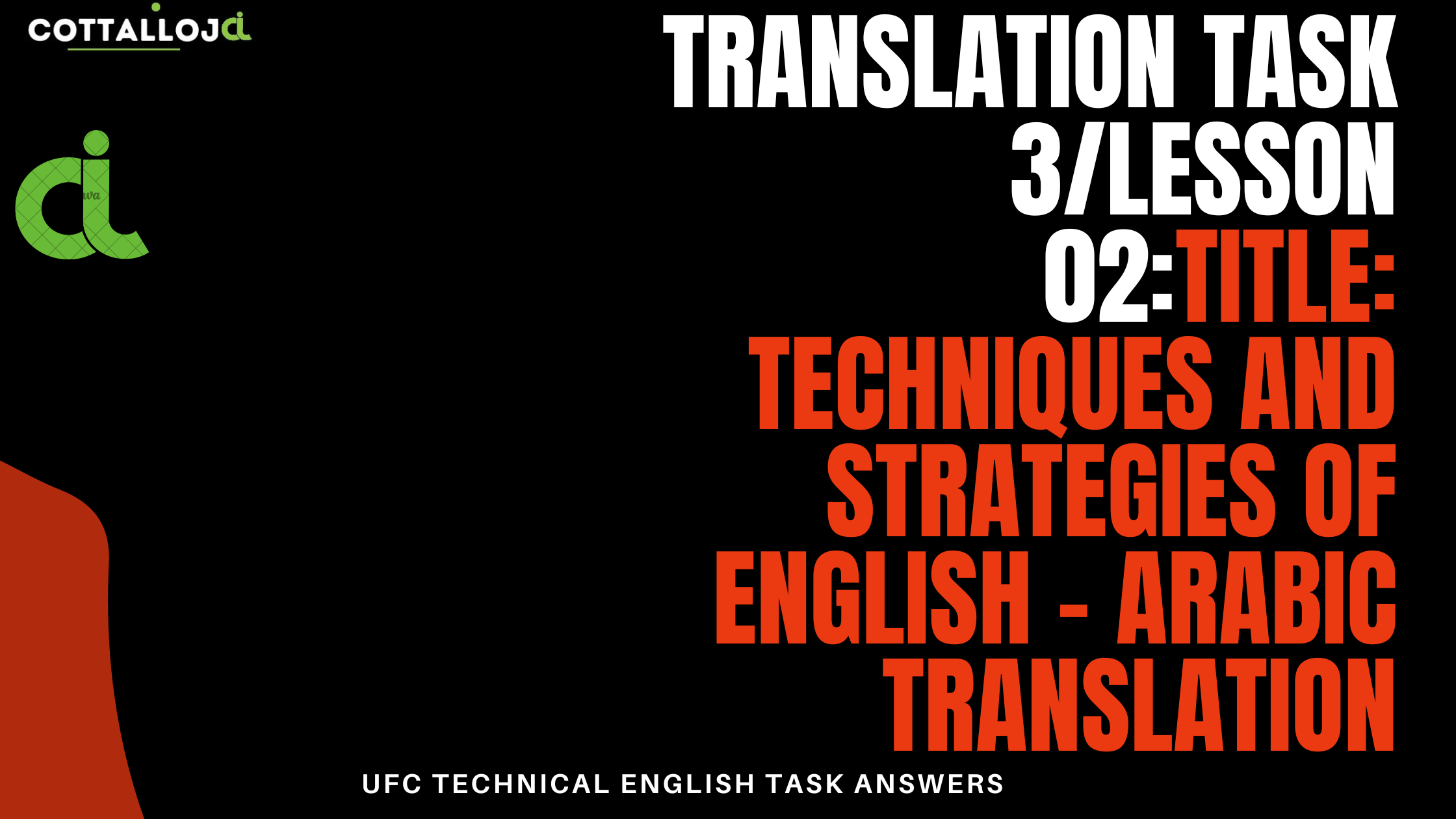Read the text and do the task that follows:

question:10
10: Why are Direct Translation Techniques and Indirect (Oblique) Translation Techniques important in English - Arabic translation?
4: What is the purpose of the "Modulation" technique?
a.a) To convert English characters into Arabic characters\
b.d) To adapt cultural references for the target audience
c.c) To express the same idea from a different perspective\
d.b) To find culturally appropriate terms in Arabic\
9: What is the main challenge associated with the "Borrowing" technique?
a.a) Integrating with Arabic grammar\
b.b) Modifying cultural references\
c.d) Finding an equivalent term in Arabic
d.c) Conveying the essence of the message\
6: In which technique are cultural references, idioms, or metaphors modified to suit the target audience?
a.d) Equivalence
b.c) Transliteration\
c.a) Adaptation\
d.b) Calque\
3: When is the calque translation technique typically used?
a.a) When there is no equivalent term in Arabic\
b.c) When adapting cultural references for the target audience\
c.d) When preserving the original syntax or idiomatic expressions
d.b) When a direct translation may not convey the intended message\
7: What does the "Equivalence" technique aim to maintain during translation?
a.b) The essence of the message\
b.d) The structure of the English phrase
c.a) Original pronunciation and phonetics\
d.c) Linguistic differences between languages\
2: Which technique involves directly incorporating English words or expressions into the Arabic text?
a.b) Borrowing\
b.c) Transliteration\
c.a) Modulation\
d.d) Equivalence
1: What are the two primary approaches in English - Arabic translation?
a.a) Borrowing and Modulation\
b.c) Transliteration and Equivalence\
c.b) Direct Translation Techniques and Indirect Translation Techniques\
d.d) Calque and Adaptation
5: "The early bird catches the worm" is an example of which translation technique?
a.a) Borrowing\
b.b) Modulation\
c.d) Adaptation
d.
c) Calque\
8: When is the "Transliteration" technique typically used?
a.
d) When a direct translation may not convey the intended message
b.
b) When adapting cultural references for the target audience\
c.
c) When preserving the original syntax or idiomatic expressions\
d.
a) When there is no equivalent term in Arabic\
a.
d) To emphasize the linguistic differences
b.
c) To bridge the linguistic and cultural gaps\
c.
a) To preserve the original meaning\
d.
b) To simplify the translation process\
Answers:
10. c) To express the same idea from a different perspective
9. d) Finding an equivalent term in Arabic
6. c) Adaptation
3. d) When preserving the original syntax or idiomatic expressions
7. b) The essence of the message
2. b) Transliteration
1. b) Direct Translation Techniques and Indirect Translation Techniques
5. d) Adaptation
8. a) When there is no equivalent term in Arabic







